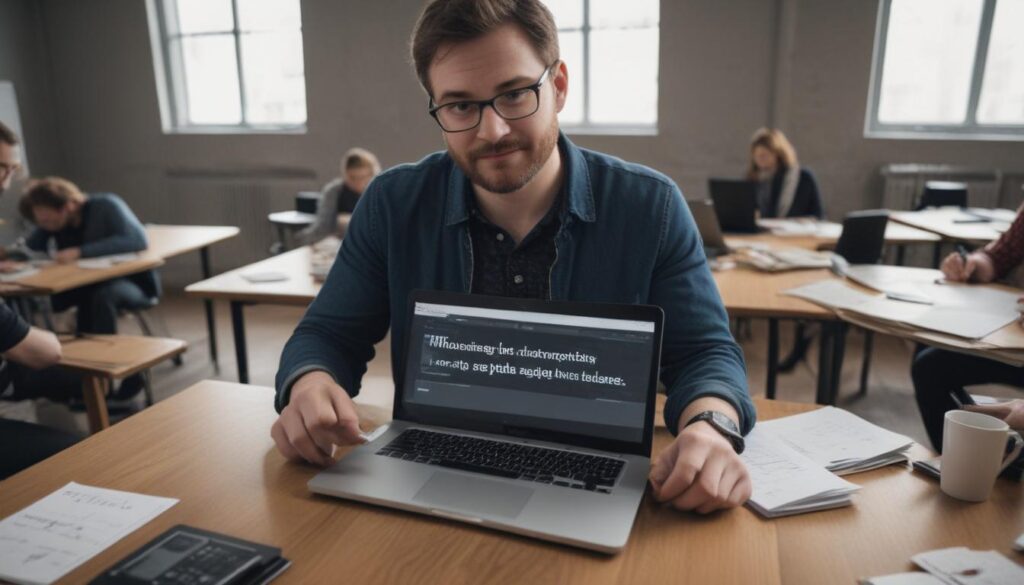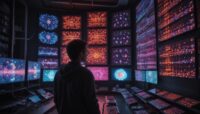Now Reading: Mastering Digital Literacy
- 01
Mastering Digital Literacy
Mastering Digital Literacy

Why Digital Literacy is the Most Important Skill You Arent Mastering
Does the online world ever feel like too much? You are constantly flooded with news alerts, social media updates, urgent emails, and an endless stream of content. It can feel overwhelming, and with this flood of information comes a hidden anxiety. How do you know what to trust? Are you doing enough to protect your privacy from scams and bad actors? It is easy to feel like you are a step behind, struggling to keep up while others seem to navigate the digital space with ease. This feeling of being digitally adrift is a major source of stress and inefficiency in the modern world.
The answer is not to unplug or give up. The solution is to empower yourself by developing strong digital literacy. This is not just about knowing how to turn on a computer or send an email. True digital literacy is the confidence and ability to find, evaluate, use, and create information using digital technology. It is the modern equivalent of reading and writing—a fundamental skill required to fully participate in society, protect yourself, and unlock incredible opportunities for learning, connection, and career growth. This guide will walk you through what digital literacy truly means and how you can start building this essential skill today.
What Digital Literacy Really Means Today
For many, the term “digital literacy” brings to mind basic computer skills learned years ago. While knowing how to use a word processor or a search engine is part of it, the concept has evolved dramatically. Today, digital literacy is a complex and multifaceted skill set that is more about critical thinking than it is about specific button presses. It is the ability to understand the digital ecosystem you operate in, to think critically about the information you consume, and to behave safely and responsibly within that environment.
Think of it as a form of modern-day wisdom. A digitally literate person does not just consume content; they question it. They ask who created it, why they created it, and what biases might be present. They do not just use social media; they understand how algorithms shape their feed and how their data is being used. This skill is not static; it requires a commitment to lifelong learning, as the platforms and challenges we face online are constantly changing. It is about adaptability, curiosity, and a healthy dose of skepticism.

The Core Pillars of Modern Digital Literacy
To truly grasp digital literacy, it helps to break it down into its essential components. These pillars work together to form a strong foundation, allowing you to operate online with confidence and competence. Mastering these areas will transform you from a passive user into an active and empowered digital citizen.
Critical Thinking in a Sea of Information
The internet has given us access to more information than at any other point in human history, but it has also created a breeding ground for misinformation and disinformation. The ability to distinguish fact from fiction is perhaps the single most important aspect of digital literacy. This involves more than just a gut feeling; it requires a systematic approach to evaluating the content you encounter. Learning to vet your sources by checking for author credentials, publication dates, and supporting evidence is crucial.
Furthermore, this pillar includes understanding the concepts of echo chambers and confirmation bias. Digital platforms are often designed to show you more of what you already like and agree with, which can reinforce false beliefs. A digitally literate individual actively seeks out diverse perspectives and uses fact-checking tools to verify claims before sharing them. They understand that a viral post is not evidence of its truthfulness and take responsibility for not contributing to the spread of false narratives.
Online Safety and Digital Citizenship
Navigating the digital world safely is non-negotiable. This pillar of digital literacy covers the practical steps you must take to protect your personal information, your devices, and your identity. This includes creating strong, unique passwords for different accounts, enabling two-factor authentication (2FA) wherever possible, and learning to recognize the tell-tale signs of phishing scams in emails and text messages. It is about understanding that your data is valuable and being deliberate about who you share it with.
Beyond personal security, this pillar extends to the concept of digital citizenship. This is about how you conduct yourself and interact with others online. It means communicating respectfully, even when you disagree. It also involves being mindful of your digital footprint—the trail of data you leave behind with every click, post, and share. A good digital citizen understands that their online actions have real-world consequences and strives to contribute positively to the online community.
How to Actively Build Your Digital Literacy
Becoming digitally literate does not happen overnight, but it is an achievable goal for everyone. The key is to take an active and curious approach to your online life. Instead of passively scrolling, start asking questions. When you encounter a new app or platform that your friends or colleagues are using, take a few minutes to explore it. Watch a short tutorial on YouTube or read an article about its best features and its privacy settings. Make it a habit to read the news from multiple different sources to get a more balanced view.
Embrace continuous learning. There are countless free resources available to help you sharpen your skills. Websites like Coursera and edX offer introductory courses on media literacy and cybersecurity. Tech news sites can keep you updated on the latest trends and security threats. Most importantly, do not be afraid to practice. The more you consciously engage with technology and think critically about your digital habits, the more your confidence and competence will grow. It is a journey of small, consistent steps that lead to profound empowerment.





































